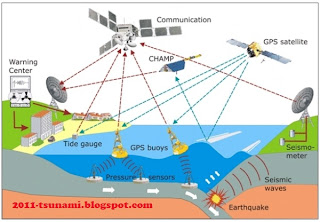Every single person in danger out there, please be safe. You mean the world to somebody.
Types of Tsunami Warning
There are two distinct types of tsunami warning systems: international and regional. Both depend on the fact that, while tsunamis travel at between 500 and 1,000 km/h (around 0.14 and 0.28 km/s) in open water, earthquakes can be detected almost at once as seismic waves travel with a typical speed of 4 km/s (around 14,400 km/h). This gives time for a possible tsunami forecast to be made and warnings to be issued to threatened areas, if warranted. Unfortunately, until a reliable model is able to predict which earthquakes will produce significant tsunamis, this approach will produce many more false alarms than verified warnings. In the correct operational paradigm, the seismic alerts are used to send out the watches and warnings. Then, data from observed sea level height (either shore-based tide gauges or DART buoys) are used to verify the existence of a tsunami.




